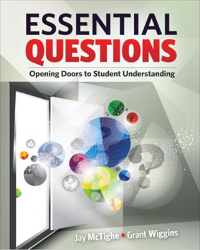In our busy and highly connected lives it can be difficult to find time to slow down, to deliberately and mindfully engage in reflective contemplation. Taking the time to do so can be significant for success, creativity, mental well-being and learning and yet we seem to struggle to commit time to this valuable practice. Schools, in particular seem to offer little time for students to slow down and think, and with the busy lives students lead such time is often entirely absent.
Taking time to sit and think should not be considered a luxury but as a vital component for learning and growth. Having actively engaged our minds in the activities of learning we must then allow ourselves the time we require to process our new ideas and for this new learning to be incorporated with our prior-understandings. Deliberate reflective time requires us to disengage from highly cognitive tasks. By both reflecting actively on ideas and giving our minds time to “play” with ideas in the background of our consciousness we create the circumstances required for deep learning.
These times when our mind is not harassed by the general noise of our day-today lives is also the time when new ideas are likely to spring forth. Sadly, the time for such endeavours is often blocked by our always on and always connected lives. We are never more than a few clicks away from our connected selves and the seemingly engaging distractions that this world entices us with. The challenge is to find times in our days where we are almost forced to disconnect and allow ourselves the time we require for contemplative thinking.
For me this time is often during my daily commute. While I travel to work and back each day amidst the stop-start traffic that is the norm of any large city, I find the time for my mind to drift and wander. On weekends the daily walk with the dogs provides a similar experience, although this is frequently disrupted by the excitement of a passing cat or an unusually interesting smell and the resulting jerk on the leads as my companions explore. It is in these times that I make some sense of the day’s events or when possible solutions to challenges emerge. More often than not the best ideas, the more creative solutions, emerge from the quiet moments where the problem is floating in the background of my mind rather than heckling for attention.
The weekly process of blogging has proven to be an excellent reflective practice. From pondering possible topics, to exploring them in depth through the writing process I have found that I gain and hopefully share insights. I read once that you should only decide to blog for your personal benefit, dreams of building an audience should not play a significant part in the decision. I have found great value in the process of writing each week and for me the blog has become a catalog of my thoughts over the years along with a repository for ideas I have researched and explored within my professional learning. Such a practice of regular reflective writing has value to students and along with daily engagement in reading is a practice that should be encouraged.
The tendency to fill every waking moment with activities is a trend we should seriously take stock of. Our time is precious and there are many ways in which it can be wasted but the deliberate and mindful process of contemplative thought should not be confused with mindless inactivity. The processes of learning, problem solving, ideation and creativity occur as much or more so during periods of inactivity as they do during times of activity. When we value learning over work we become open to the possibility that a student whose mind seems to be wondering, who is not actively “doing” the set task may indeed be fully immersed with their learning. The subtle shift in our language choices from ‘work', with its focus on productivity and activity, to ‘learning’, associated with cognition and the building of connections between ideas in the mind, allows us to value periods of apparent inactivity. Too often does the ‘work' minded teacher break the mental flow achieved by a learner in a state of contemplation with the call to ‘get back to work”.
Find the time for contemplation and reflective thinking. Value it as a part of your professional practice and never feel guilty for taking time away from the active doing of your duties.
By Nigel Coutts


































